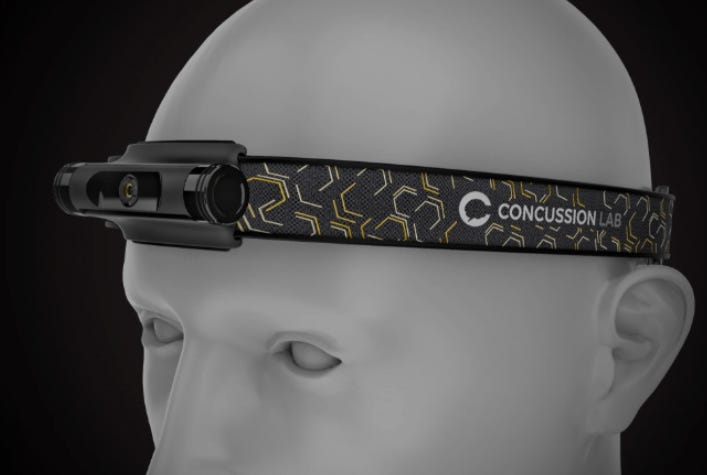Part 1: The Dangerous Illusion: Why Your Goggles Are Lying About Your Head Impulse Test

As a physical therapist specializing in vestibular disorders, I see an incredible influx of new technology. These tools promise to improve our diagnostic capabilities, and many do. But the danger lies not in the technology itself, but in a fundamental misunderstanding of how to use it. A critical error I have identified involves the improper use of infrared goggles during the Head Impulse Test (HIT).
Here's the truth: you cannot use a light or video feed inside infrared goggles as a stable visual target for a Head Impulse Test. If you do, you are performing a completely different test, and you will misinterpret your results. This isn't a minor detail; it's a fundamental error that can lead to misdiagnosing your patient's problem, potentially resulting in inappropriate treatment and prolonged suffering for your patient.
Understanding the True Head Impulse Test
The purpose of an accurate Head Impulse Test is to assess the Vestibulo-Ocular Reflex (VOR). Your VOR's job is to keep your eyes fixed on a target in space, even when your head moves. To properly test this reflex, the target must be earth-fixed.' This means the patient fixates on a stationary point in the environment—a mark on the wall, a specific letter on an eye chart, or a target you hold steady.
When you rapidly turn a patient's head while their eyes remain fixed on an earth-fixed target, a healthy VOR keeps the eyes stable. No corrective eye movement occurs. But when a patient has a vestibular hypofunction, the eyes briefly move with the head, then snap back to the target with a rapid 'corrective saccade.' This saccade is the positive finding for a true HIT.
Right Vestibular Hypofunction
When you thrust the patient's head to the right, a right vestibular hypofunction is indicated by the following signs:
The eyes will move to the right, in the direction of the head movement.
A corrective saccade then beats to the left to bring the eyes back onto the earth-fixed target.
This corrective saccade indicates right vestibular hypofunction, as the right vestibulo-ocular reflex (VOR) is unable to maintain the eyes on the target during head movement.
Left Vestibular Hypofunction
When you thrust the patient's head to the left, a left vestibular hypofunction is indicated by these signs:
The eyes will move to the left, in the direction of the head movement.
A corrective saccade then moves the eyes to the right to bring them back onto the earth-fixed target.
This corrective saccade is the key sign of a left vestibular hypofunction, as the left VOR is impaired and fails to keep the eyes on the target.
The Suppressive Head Impulse Test: A Head-Fixed Target Changes Everything
When you introduce a light or video target inside infrared goggles, this target moves with the patient's head. This is a 'head-fixed target.' With a head-fixed target, you are no longer doing a true HIT; you are performing a 'Suppressive Head Impulse Test.' In a true HIT, the eyes should remain stable on the earth-fixed target, while in a Suppressive HIT, the eyes will track the head-fixed target.
In a Suppressive Head Impulse Test, the brain actively tries to suppress the VOR because the target is moving with the head. A normal VOR would actually move the eyes off the head-fixed target. The brain must override the VOR.
The Ultimate Difference
An abnormal finding on a true HIT is the polar opposite of an abnormal finding on a suppressive HIT. The eye movements tell entirely different stories. The table below outlines the critical differences.
Don't Fall into the Trap
Using a head-fixed target and interpreting the results as a traditional Head Impulse Test creates a dangerous illusion of accuracy. You risk missing a true vestibular hypofunction or misdiagnosing an issue that isn't there. You fly by the seat of your pants.
Your patients depend on your precise understanding of these critical differences. The sophisticated technology of infrared goggles offers incredible precision when used correctly, but it can never replace a fundamental knowledge of vestibular assessment. For an accurate Head Impulse Test, the visual target must be earth-fixed.' Don't let your goggles lie to you.
Brian Werner, PT, MPT, is the National Director of Vestibular Education & Training at FYZICAL Therapy & Balance Centers. Brian Werner, a physical therapist specializing in vestibular issues, has been in practice for over a quarter of a century. He writes Substack articles and has helped thousands of patients overcome their dizziness and balance problems.






If you have a device like the Apple Pro Vision goggles, and the correct programming, you COULD have the goggles simulate an earth fixed object while the head moves.
Thanks Brian.
Great description of SHIMP vs HIT!